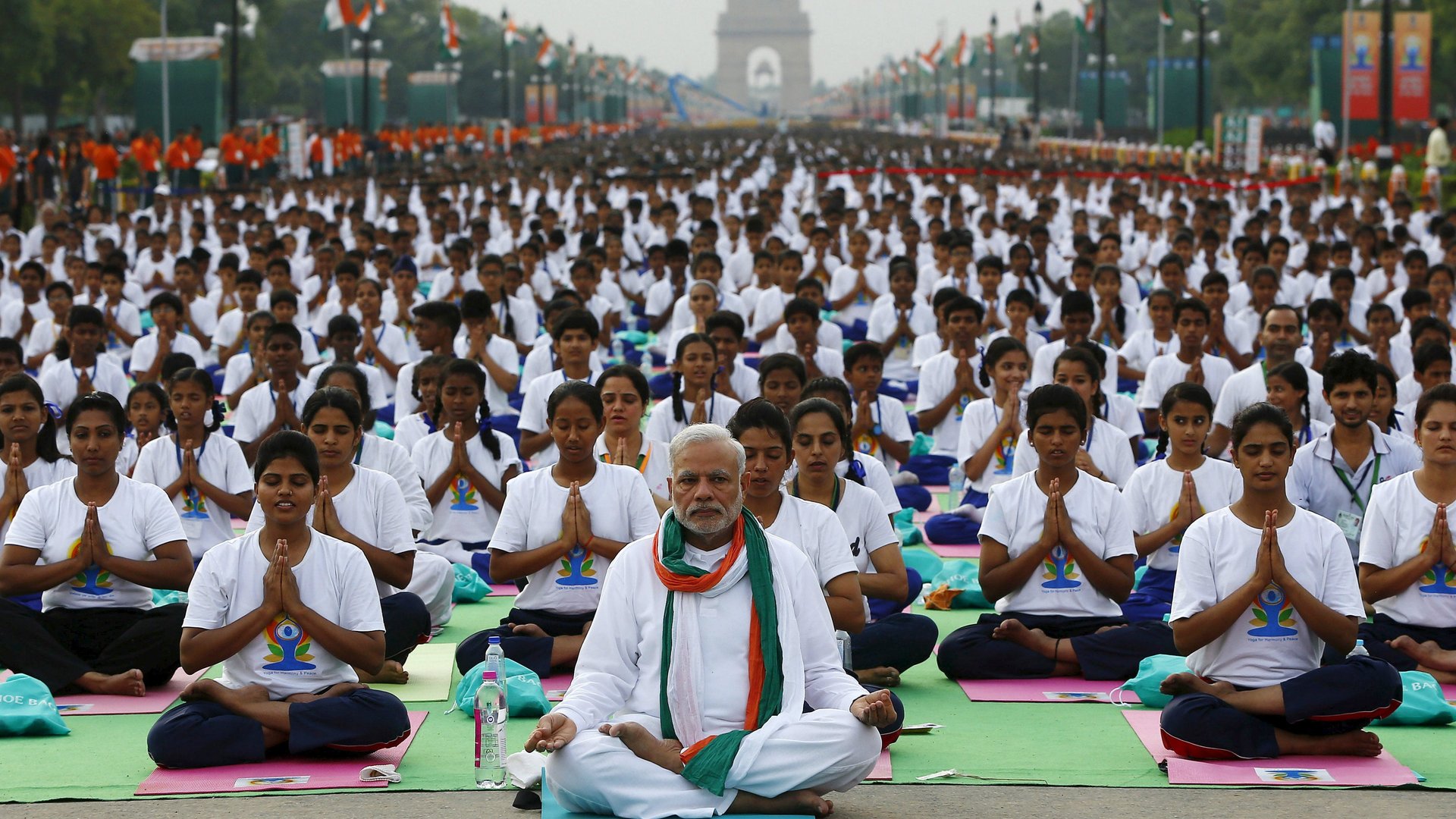Can India save yoga from White people?
Yoga has offered the Indian state unprecedented opportunities for global, media-savvy political performance. In recent years, the nation has made international headlines by creating a national ministry for yoga.


Yoga has offered the Indian state unprecedented opportunities for global, media-savvy political performance. In recent years, the nation has made international headlines by creating a national ministry for yoga.
It has promoted yoga tourism; staged mass yoga practices and Indian officials have even proposed yoga as a national solution to an astonishing range of social problems, from reducing rape to curing cancer.
AYUSH, the Indian ministry responsible for yoga, has recently gotten into the music business, releasing Yog Geet as the official song for this year’s International Day of Yoga.
But, as yoga has gone global, the cultural meanings of yoga have spiralled far and wide. While Indian politicians have suggested that yoga will tame rates of sexual assault, US lawmakers have tried to ban “yoga pants” under indecent exposure laws. Yog Geet will have to compete internationally with dozens of yoga-inspired albums in the West.
Yoga’s global popularity is useful for the Indian state, which uses it to employ soft power. But this popularity can be a double-edged sword. Identifying yoga as “Indian” may increasingly be an uphill battle.
In the ongoing battle over the question of “who owns yoga,” one of the most interesting trends has been the emerging voice of the Indian diaspora. Artists and writers of Indian ancestry are offering new and often provocative points of view on yoga’s origins, its meanings, and its cultural work in a globalizing world.
The Indian-American artist Chiraag Bhakta, who goes by the pseudonym of *Pardon My Hindi, has made visually stunning installations about yoga. These works invite viewers to reflect on the racial and economic hierarchies of globalising yoga.
His 2009 artwork #WhitePeopleDoingYoga formed part of a recent Smithsonian Museum exhibition on yoga and visual culture. It collects decades of magazine covers, posters, and pictures of yoga in the West. Covering a towering wall, these images loom over the viewer—asking us to contemplate how small images become part of larger patterns of cultural power.
In #WhitePeopleDoingYoga, stereotypes of South Asia as an otherworldly place abound. Deities both exotic and available for Western use press in on the viewer. So do histories of Western commercialisation. Viewers of #WhitePeopleDoingYoga are asked to think about who has made money from the global popularity of yoga—and who has not.
Pardon My Hindi writes in his artist’s statement accompanying the piece:
In the end, I feel compelled to draw parallels with industrial colonization by the same dominant voice that is now adding another conquest to its collection. Meet the new founders of YOGA™.
Yet not all of the Indian diaspora has been quite as critical of the circuits of globalisation and consumerism that have brought contemporary yoga around the world. Others have, instead, seen that relationship as a source of possibility.
This approach appears in novels like those of the writer Bapsy Jain, whose Indian heroine Lucky uses her training in yoga to find the superpowers she needs to survive a life of global crime and cutthroat capitalism in the US.
Blending chick lit with murder mystery, Jain’s work presents yoga as a powerful tool for Indian women navigating stormy seas of romance and business. In such fiction, yoga is not so much a practice that opposes consumer culture. Instead, it becomes a practice that helps an individual survive the often nasty search for profit.
Other writers from the Indian diaspora have sought to use yoga-themed popular fiction as a way to promulgate particular Indian philosophies and mythologies. The writer Mohan Ashtakala, who identifies himself as a Hindu priest based in Canada, recently published an adventure novel in this vein called The Yoga Zapper (2015).
This time-travel adventure dramatises a perfect past where yogis meditated in harmony with the grand principles of the cosmos. This ideal, the author suggests, can be found both in South Asian scriptures and in Western fantasies.
These works from the Indian diaspora all, in their different ways, draw attention to the role of “India” in shaping yoga. They speak out against the potential exploitation of Indian cultural capital for white Western gain.
They develop their own stories, in which yoga plays a part in a globalised commercial world. And they remind us that the wild worlds of imagination, superpower, and fantasy are part of how India has contributed to the yoga of today.
This article was originally published on The Conversation. Read the original article.